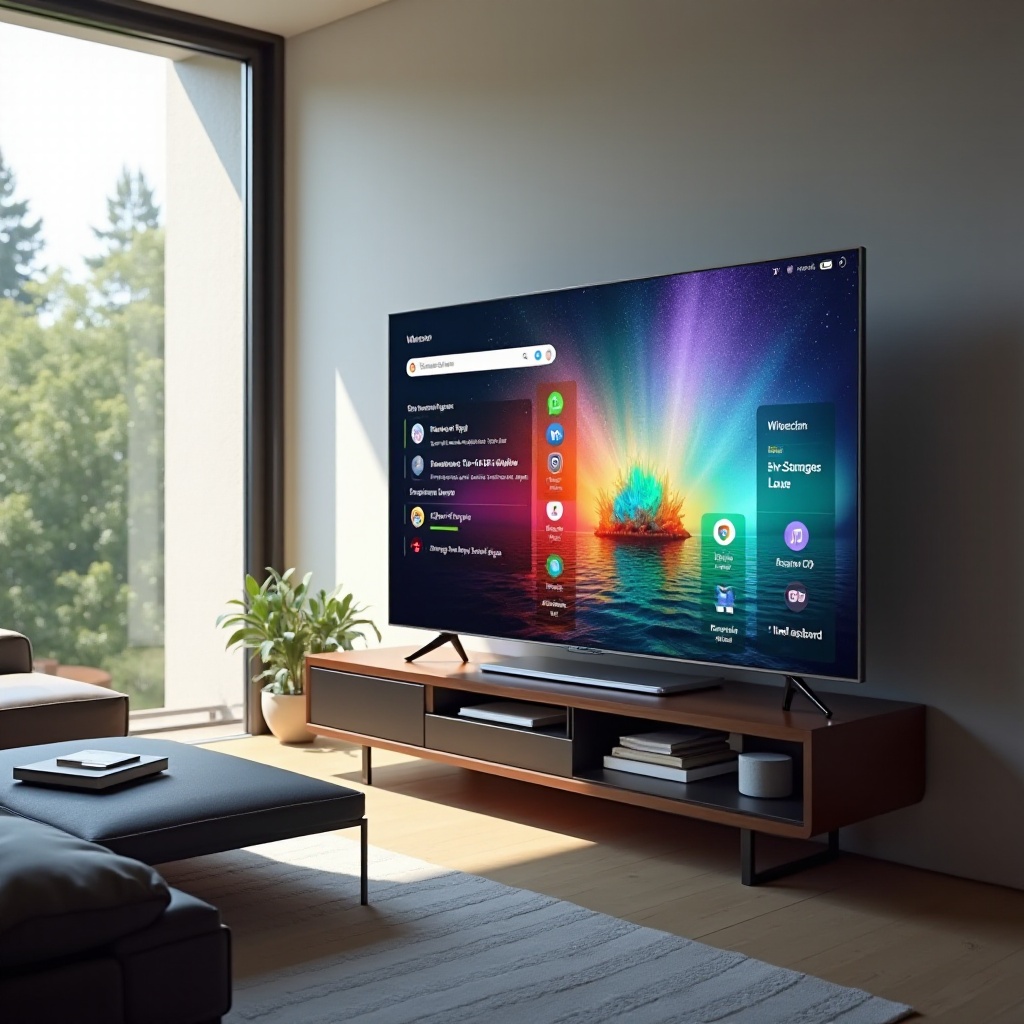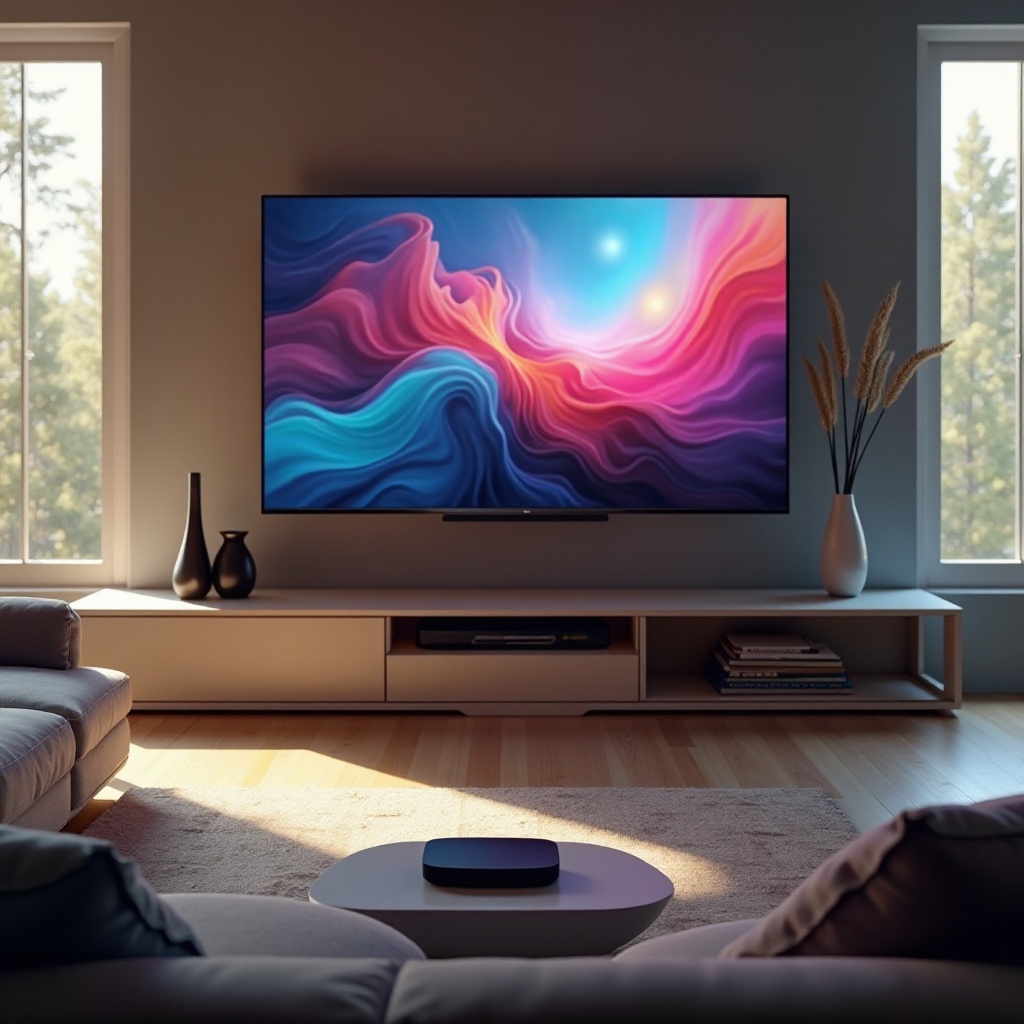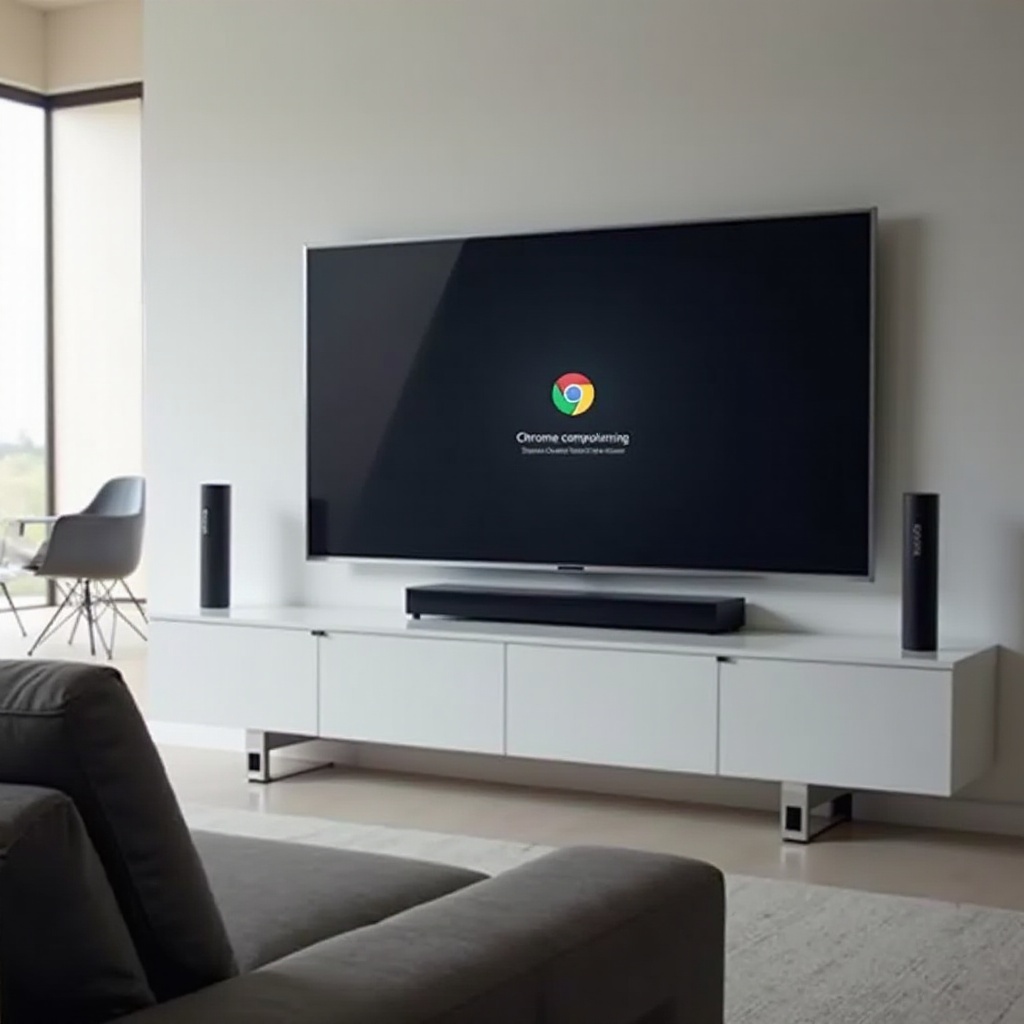Introduction
Experience a major upgrade in your entertainment environment by integrating Chrome computing with your TV. Nowadays, smart technologies are at the forefront of home entertainment, drastically evolving the way we interact with our television sets. Chrome computing, a versatile technology, promises to streamline this experience, providing not only entertainment but also productivity capabilities. Enabled by devices like Google Chromecast, Chrome OS Smart TVs, and other peripherals, Chrome computing brings a new dimension to your TV viewing experience.

What is Chrome Computing?
Chrome computing revolves around Google’s Chrome OS, a lightweight operating system designed primarily for online functions. It offers fast performance, a simple interface, and seamless integration with Google services. Primarily found in Chromebooks, it has expanded to other devices, including those that convert your TV into smart, multifunctional screens.
Chrome computing on televisions allows users to navigate a familiar web-based interface, utilize numerous applications, and leverage cloud storage. This combination makes it attractively versatile, aligning with the increasing demand for smart home integrations and IoT (Internet of Things) technologies. Whether for streaming video, browsing the internet, or working from home, Chrome computing significantly enhances your TV’s functionality.
Benefits of Using Chrome Computing on Televisions
One major benefit of using Chrome computing on TVs is improved accessibility. Popular platforms and services like YouTube, Netflix, and Google Drive are easily accessible, bringing vast entertainment and productivity resources directly to your big screen. This ease of access is bolstered by the inclusion of voice-controlled search features, like Google Assistant, empowering users to find content effortlessly.
Another advantage is the seamless integration with other Google services. If you’re an existing user of Google Calendar, Gmail, or Google Photos, these services sync smoothly with your TV. You can schedule events, check emails, and showcase photo albums without needing separate devices.
Apart from entertainment and productivity, Chrome computing enhances efficiency. The lightweight nature of Chrome OS ensures swift boot-up times and quick transition between tasks. Given its design for web applications, you’re always ready to stream, browse, or complete your tasks without the traditional lags associated with more complex operating systems.
Best Chrome-Powered Devices for TVs
Google Chromecast with Google TV
Google’s Chromecast with Google TV is a standout device for Chrome computing. It plugs into your TV’s HDMI port, transforming any ordinary TV into a smart hub. With its user-friendly interface and built-in Google Assistant, navigating through content becomes effortless. The device supports 4K HDR streaming, ensuring you get high-quality video outputs.
Chrome OS Smart TVs
Several manufacturers are integrating Chrome OS directly into their smart TVs. These televisions combine all the benefits of Chrome computing without the need for additional peripherals. Users can enjoy a streamlined experience with faster access to applications, a unified interface, and the seamless integration of Google services directly onto larger screens.
Other Chrome Devices and Peripherals
Beyond Chromecast and Chrome OS Smart TVs, there are other peripherals designed to integrate Chrome computing with your TV. Devices like Chromebits and USB sticks powered by Chrome OS can convert regular screens into powerful smart displays. They often come at a lower cost compared to smart TVs, offering a budget-friendly alternative to upgrading your setup.

Step-by-Step Guide to Setting Up Chrome Computing on Your TV
To fully enhance your Chrome computing experience, knowing how to set it up correctly is essential. Follow these steps to turn your TV into a multifunctional smart device.
- Select Your Device: Choose a Chrome-powered device such as Google Chromecast or a compatible smart TV.
- Connect Your Device: Plug the device into your TV’s HDMI port. Ensure the corresponding power connections are also made.
- Switch Inputs: Use your TV’s remote to switch to the HDMI input connected to your Chrome device.
- Initial Setup: For first-time setups, follow on-screen instructions. Typically, you will need to connect to Wi-Fi and link your Google account.
- Download Apps: Access the Google Play Store to download necessary applications. Focus on entertainment, productivity, and utility apps for a full experience.
- Customize Preferences: Adjust settings according to your preference. This includes display settings, audio output, and linking additional Google services.
- Enable Voice Control: If using Google Assistant, ensure the mic settings are configured. This allows for voice searches and commands, making navigation smoother.

Top Chrome Apps for an Enhanced TV Experience
Entertainment Apps
Key entertainment apps include YouTube, Netflix, Hulu, Amazon Prime Video, and Disney+. These apps offer a wide variety of streaming content, from movies and TV shows to documentaries and children’s programs, driving the core of your entertainment experience.
Productivity Apps
For productivity, import apps like Google Drive, Docs, Sheets, and Slides, enabling you to work directly from your TV. Accessing these apps can be incredibly beneficial, especially for multitasking during TV use or home office setups.
Utility Apps
Utilities such as Google Calendar, Google Photos, and voice-enabled Google Assistant are highly essential for optimizing your TV’s potential. Google Calendar keeps your schedule in check, Google Photos lets you browse memories, and voice assistance facilitates easy app navigation.
Common Issues and Troubleshooting Tips
Navigating Chrome computing on TVs isn’t devoid of potential issues. If you encounter connectivity problems, ensure your network is stable and the devices are within a suitable range of your Wi-Fi router. For sluggish performance, try restarting both your TV and the Chrome device, clearing cache or reinstalling problematic apps. In cases where voice control does not respond correctly, verifying that your microphone is activated and configured properly often resolves the issue.
Conclusion
Integrating Chrome computing with your TV takes your viewing experience to a new level. With a variety of Chrome-powered devices and a wealth of apps to choose from, you can easily customize and optimize your setup for both entertainment and productivity. Understanding the setup process and troubleshooting common issues allows you to enjoy a seamless and enhanced television experience.
Frequently Asked Questions
Can I use a regular TV for Chrome computing?
Yes, you can use a regular TV for Chrome computing by connecting a Chrome-powered device, like Google Chromecast, to the HDMI port of your TV.
What are the minimum requirements for Chrome computing on TV?
The primary requirement is an HDMI-enabled TV and a stable internet connection. Devices like Chromecast do the rest by connecting to these ports and accessing online services.
Are there any subscription fees for using Chrome computing on TV?
The use of the Chrome OS and Google services is free; however, some apps and streaming services available on Chrome computing may require individual subscriptions.